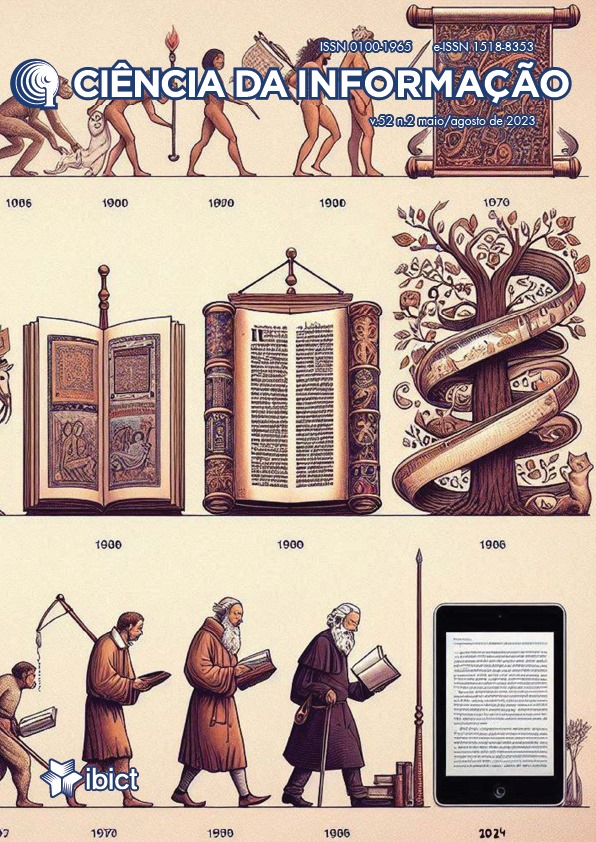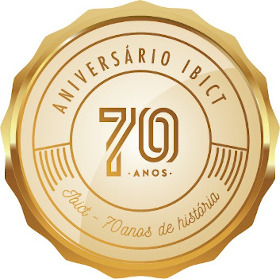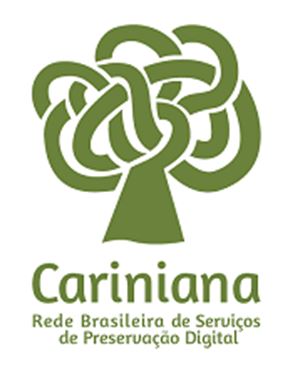Disaster Victim Identification in the Context of Information Science
DOI:
https://doi.org/10.18225/ci.inf.v52i2.7095Palavras-chave:
disaster victim identification, mass disaster, information science, Brumadinho, information managementResumo
Disasters are topics of great sociological interest for several reasons, including the deaths that eventually occur and the serious damage caused. In disasters with multiple fatalities, forensic identification is essential for humanitarian, civil and criminal reasons. This identification process is internationally called Disaster Victim Identification (DVI). The DVI process dynamics requires protocol adoption aiming to minimize the damages resulting from the event and to maximize the available resources to accomplish the mission successfully. In this vein, it’s imperative the definition of an effective communication structure that ensures critical information is transmitted to recipients. Objects of Information Science study are present in all activities developed in a DVI response, from the origin of information to its retrieval and use. The objective of this article is to demonstrate some aspects of Information Science in the DVI response, for this in the first section there is an introduction aiming to offer a first contact with the proposed theme, followed by a section with a literature review on DVI. The third section seeks to present the relationship and some aspects of Information Science in the DVI activity. In the fourth section, the dynamics of the activities are presented in a real case: the DVI response on the occasion of the rupture of the Brumadinho dam. The fifth and last section presents the final considerations.
Downloads
Referências
ALMEIDA, C. A. P. Proposta de protocolo para identificação odonto-legal em desastres de massa. 2000. 79 f. Tese (Doutorado em Odontologia Legal e Deontologia) – Faculdade de Odontologia de Piracicaba da Universidade Estadual e Campinas, Piracicaba, 2000.
ARAUJO, C. A. Á. Fundamentos da Ciência da Informação: correntes teóricas e o conceito de informação. Perspectivas em Gestão & Conhecimento, João Pessoa, v. 4, n. 1, p. 57-79, jan./jun. 2014. Available at: https://periodicos.ufpb.br/ojs2/index.php/pgc/article/view/19120. Access on: 11 mar. 2022.
BARRETO, A. A. Os destinos da Ciência da Informação: entre o cristal e a chama. Informação & Sociedade: estudos, Paraíba, v. 9, n. 2, 1999. Available at: https://periodicos.ufpb.br/ojs2/index.php/ies/article/view/397. Access on: 6 jan. 2022.
BELKIN, N. J.; ROBERTSON, S. E. Information Science and the phenomenon of information. Journal of the American Society for Information Science, [s. l.], v. 27, n. 4, p. 197-204, jul/ago. 1976. DOI: 10.1002/asi.4630270402.
BORKO, H. Information science: what is it? American Documentation, [s. l.], v. 19, n. 1, p. 3-5, Jan. 1968.
BRASIL. Polícia Federal. Instrução Normativa nº 176-DG/PF, de 25 de agosto de 2020. [Institui a Comissão Permanente de Identificação de Vítimas de Desastres – CPDVI da Polícia Federal e disciplina o acionamento e a resposta em Identificação de Vítimas de Desastres – DVI no âmbito da Polícia Federal]. Brasília: Ministério da Justiça e Segurança Pública, 26 ago. 2020.
BRASIL. Resolução nº 3, de 2.7.99, do Conselho Nacional de Defesa Civil. Institui o Manual para a Decretação de Situação de Emergência ou de Estado de Calamidade Pública. Brasília: Diário Oficial da União, 1999. Available at: https://www.defesacivil.rs.gov.br/upload/arquivos/201511/04145516-02-manual-para-decretacao-de-situacao-de-emergencia-ou-de-estado-de-calamidade-publica-volume-1.pdf. Access on: 11 ago. 2021.
CAPURRO, R. Epistemologia e Ciência da Informação. In: V ENCONTRO NACIONAL DE PESQUISA EM CIÊNCIA DA INFORMAÇÃO, 5., 2003, Belo Horizonte. Anais [...]. Belo Horizonte: UFMG, 2003. Available at: http://www.capurro.de/enancib_p.htm. Access on: 30 set. 2021.
CARDOSO, D. Enchentes, deslizamentos e a sociedade em rede: um estudo sobre o fluxo de informação em desastres naturais a partir do caso de Petrópolis 2013. 2015. 65 f. Dissertação (Mestrado em Ciência da Informação) – Universidade Federal de Santa Catarina, Centro de Ciências da Educação. Programa de Pós-Graduação em Ciência da Informação, Florianópolis, 2015.
CHRISTENSEN. C. O dilema da inovação: Quando as novas tecnologias levam as empresas ao fracasso. São Paulo: MBooks, 1997.
CUNHA, E. Devolvendo a identidade: a antropologia forense no Brasil. Ciência e Cultura, São Paulo, v. 71, n. 2, p. 30-34, abr./jun. 2019. Available at: http://dx.doi.org/10.21800/2317-66602019000200011. Access on: 11 ago. 2021
DAHLBERG, Ingetraut. Knowledge Organization: Its: Scope and Possibilities. Knowledge Organization, v. 20, n. 4, p. 211-222, 1993.
INTERPOL. Disaster victim identification guide. 2018. Available at: https://www.interpol.int/How-we-work/Forensics/Disaster-Victim-Identification-DVI. Access on:11 ago. 2021.
MATTEDI, M. Dilemas e perspectivas da abordagem sociológica dos desastres naturais. Tempo Social, São Paulo, v. 29, n. 3, p. 261-285, dez. 2017.
MORGAN, Oliver. La gestión de cadáveres en situaciones de desastre: guía práctica para equipos de respuesta. Washington, D.C.: OPS, 2006. ISBN 92 75 32630 4.
PINHEIRO, L. V. R. Informação: esse obscuro objeto da Ciência da Informação. Revista Morpheus: estudos interdisciplinares em memória social, Rio de Janeiro, v. 3, n. 4, 2014. Available at: https://seer.unirio.br/morpheus/article/view/4108. Access on: 6 maio 2021.
PONJUÁN DANTE, G. Gestión de Información: dimensiones e implementación para el éxito organizacional. Gijón: Trea, 2007. ISBN: 978-84-9704-324-3.
ROCHA, C. S. Atuação da equipe multidisciplinar do Instituto Médico Legal de Belo Horizonte frente ao rompimento da Barragem B1, da Mina do Córrego do Feijão, em Brumadinho. 2020. 72 f. Dissertação (Mestrado Profissional em Promoção de Saúde e Prevenção da Violência) – Faculdade de Medicina da Universidade Federal de Minas Gerais, Belo Horizonte, 2020.
SARACEVIC, T. Ciência da informação: origem, evolução e relações. Perspectivas em Ciência da Informação, Minas Gerais, v. 1, n. 1, p. 41-62, jan./jun. 1996.
SOUZA, M. A.; URTIAGA, G. O.; MELO, F. R.; DA SILVA, L. M. Identificação de vítimas de desastre por impressões digitais: o rompimento da barragem de Brumadinho. Revista Brasileira de Ciências Policiais, Brasília, v. 13, n. 7, p. 337–350, jan./abr. 2022. ISSN 2178-0013. ISSN Eletrônico 2318-6917. DOI: 10.31412/rbcp.v13i7.839.
UNITED NATIONS DEVELOPMENT PROGRAMME - UNDP. Report Reducing Disastrer Risk: a challenge for development a global report. New York: John S. Swift Co., Inc. 2004. p. 146. Available at: https://www.undp.org/publications/reducing-disaster-risk-challenge-development. Access on: 11 ago. 2021.
WINKSOG, C.; TSOKOS, M.; BYARD, R. W. The progression from disaster victim identification (DVI) to disaster victim management (DVM): a necessary evolution. Forensic Science, Medicine e Patholology, [s. l.], v. 8, n. 2, p. 81-83, 2012. DOI: 10.1007/s12024-011-9295-9. Available at: https://link.springer.com/article/10.1007/s12024-011-9295-9. Access on: 11 mar. 2022.
WINKSOG, C.; TONKIN, A.; BYARD, R. W. The educational value of disaster victim identification (DVI) missions-transfer of knowledge. Forensic Science, Medicine and Patholology, [s. l.], v. 8, n. 2, p. 84-87, jun. 2012. Available at: https://link.springer.com/article/10.1007/s12024-011-9259-0. Access on: 11 mar. 2022.
WU, B. Patient continued use of online health care communities: web mining of patient-doctor communication. Journal of Medical Internet Research, Shanghai, v. 20, n. 4, p. 1-15, abr. 2018. Available at: 10.2196/jmir.9127.
Downloads
Publicado
Edição
Seção
Licença
Copyright (c) 2024 Rodrigo Gonçalves, Adilson Luiz Pinto

Este trabalho está licenciado sob uma licença Creative Commons Attribution-ShareAlike 4.0 International License.
- A publicação se reserva o direito de efetuar, nos originais, alterações de ordem normativa, ortográfica e gramatical, com vistas a manter o padrão culto da língua, respeitando, porém, o estilo dos autores;
- As provas finais não serão enviadas aos autores;
- Os autores mantém os direitos totais sobre seus trabalhos publicados na revista Ciência da Informação, ficando sua reimpressão total ou parcial, depósito ou republicação sujeita à indicação de primeira publicação na revista, por meio da Licença Pública 4.0 Internacional Atribuição-CompartilharIgual
- Deve ser consignada a fonte de publicação original;
- As opiniões emitidas pelos autores dos artigos são de sua exclusiva responsabilidade;
- Cada autor receberá dois exemplares da revista, caso esteja disponível no formato impresso.





























